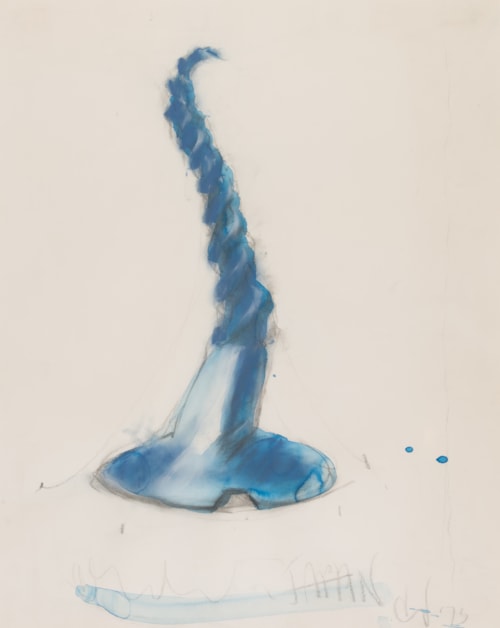
Claes OLDENBURG
Stockholm 1929 - New York 2022
Biography
Born in Stockholm in 1929, the American sculptor Claes Thure Oldenburg was the son of a Swedish diplomat and settled with his family in Chicago in 1936. He studied art and literature at Yale University and in 1950 returned to Chicago and enrolled at the School of the Art Institute of Chicago. (As he recalled, many years later, ‘at twenty-three, I realized that the only thing I might be good at was drawing, and I decided to try and become an artist.’ It should be noted, however, that the artist later chose to destroy most of his drawings of this period.) In 1956 Oldenburg moved to New York, where he made drawings of familiar, ordinary objects and began working on the concept of ‘soft sculpture’. His first solo exhibition, which included three-dimensional pieces, was held at the Judson Gallery in New York in 1959.
The 1960s saw Oldenburg closely associated with the Pop Art movement, and creating many performance pieces or ‘happenings’ under the title of Ray Gun Theater. In 1963 he settled in Los Angeles and within a few years had produced the first of his drawings of ‘colossal monuments’; giant-sized objects placed in unusual or incongruous settings. From the early 1970s onwards Oldenburg concentrated almost exclusively on monumental public commissions, most of which were done in collaboration with his second wife, the Dutch writer and curator Coosje van Bruggen, whom he married in 1977. Oldenburg remains best known today for his public art installations and outdoor sculptures representing scaled-up versions of everyday objects.
As the critic and curator Gene Baro has noted, ‘The role that draughtsmanship has played in the shaping of Oldenburg’s artistic intelligence can scarcely be exaggerated. Drawing in all its forms has been of the first importance to the sculpture of this master…But if the drawings serve a purpose, they have also a telling force and integrity on their own. They are the tissue and substance of a vision, brought alive with a technical control, wit, and freedom second to none.’ Another writer has pointed out that ‘Spontaneity is heightened in [Oldenburg’s] drawings by a free use of charcoal, watercolor, colored pencil, and pastel: lines and washes of color join to describe form and call to mind the intuitive shapes of Zen brush paintings.’


